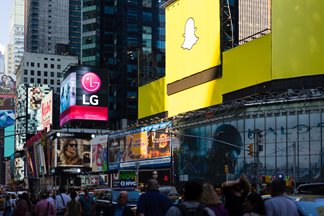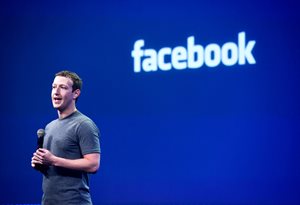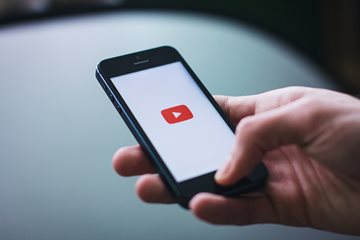Influencer Marketing: Strategy for Brands & Why the Platform Matters
By Laura Myers
August 18, 2017
B2C, Branding, content marketing, Content Strategy, customer engagement, Facebook, Influencer Marketing, Instagram, marketing, social media, Video Marketing
The history of the influencer, dates as far back as the turn of the century when celebrity  baseball player Babe Ruth began endorsing a variety of relevant companies at the time. For nearly a hundred years, what I will loosely refer to here as ‘endorsement marketing’ followed the same strategy: pay a celebrity to promote a product or service, and in due time, customers en masse will obtain whatever that celebrity was promoting for themselves.
baseball player Babe Ruth began endorsing a variety of relevant companies at the time. For nearly a hundred years, what I will loosely refer to here as ‘endorsement marketing’ followed the same strategy: pay a celebrity to promote a product or service, and in due time, customers en masse will obtain whatever that celebrity was promoting for themselves.
Fast forward to the late 2000s, social media begins to show the first signs of its potential, creating a brand new idea called social media marketing and with that, the modern influencer is born. The difference now is, they’re not the Michael Jordans or Cindy Crawfords of the world (c’mon, no one can argue that the 90s weren’t the golden age of celebrity endorsements). They’re now our peers; these average people who have become social media sensations but still feel like they’re down to earth enough we could call ‘em up and chat as if they were our friends for life.
In short, the idea of influencer marketing isn’t new, but the strategy, content, dissemination, platforms, people etc. have undoubtedly given the premise a refresh. Over the next little while I will be writing a series on influencer marketing, exploring these areas from a more predominantly B2C vantage point, and giving brands a better idea of how to devise their own influencer marketing plan. To start, I will be discussing how the faces of influencers have changed, and will highlight a handful of the most prominent social media platforms in the game today.
The Peer Phenomena
 Celebrities are and always have been influencers, but in recent years the whole structure of how brands acquire customer attention and loyalty has changed and with it, who they employ to do it has followed suit. Steve Rubel captioned it best when he said: “First, there's been an inversion of influence. The traditional pyramid, where authority figures on top sway the masses, has been upended. Studies show influence has shifted away from institutions and it now travels primarily through peer individuals. Second, attention has flipped as well. It's no longer optimal for brands to just demand it. Attention now must also be earned. It's about relationships over reach.”
Celebrities are and always have been influencers, but in recent years the whole structure of how brands acquire customer attention and loyalty has changed and with it, who they employ to do it has followed suit. Steve Rubel captioned it best when he said: “First, there's been an inversion of influence. The traditional pyramid, where authority figures on top sway the masses, has been upended. Studies show influence has shifted away from institutions and it now travels primarily through peer individuals. Second, attention has flipped as well. It's no longer optimal for brands to just demand it. Attention now must also be earned. It's about relationships over reach.”
The influencer strategy is hinged on the peer phenomena. It may be smaller pockets of fans per individual but with their social influence comes higher engagement, trust and loyalty through a more personal connection they have with their following. Social media has created entirely digital friendships, and why wouldn’t you buy something your friend suggested or told you that they love?
The strength of this dynamic is evident for brands economically as well. Say you have a 500k endorsement budget, you could spend it all on one celebrity with one campaign and reach their one fan base of a few million. Or, you could spend it on 5 influencers at 100k each, with 5 diverse campaigns and 5 different fan bases. If an influencer is worth a 100k a campaign, chances are they have close to a million people in their fan base if not more, so the reach you’re going to get with that 500k could go much further and with that, touching your customers on a more personal and connected level.
The Influencer and their Social Platform
Not all social media platforms are created equal, each has their own algorithm, amount of users, experience for both user, influencer and brand, audience type, lifespan of content, I could go on and on. All are important things for any marketing team to consider when choosing an influencer because for all these reasons, the ROI on branded content will vary from platform to platform so many things need to be taken into account.
Additionally, does an influencer need to have a presence of every social media platform in order to be worthy of the title? Not necessarily. Depending on their strategy as an influencer, the brands they want to partner with or the kind of content they want to create, some platforms will be better suited for them than others. Here I will explore a few of the most popular social media platforms for influencer marketing and highlight the brand/influencer relationship that is, in my opinion, best suited for each one.
Let’s start with Snapchat. The wrench thrown in with this platform is that audience size, which is a major draw for interest from brands is unavailable, so influencers are left to negotiate deals based on active views. Thankfully, repeated views only count as one, so active views are a true reflection of the engagement per user and, since the snap stories don’t flow from one to the other like Instagram Stories, views are more purposeful and therefore show greater engagement (read: influence). Snapchat does only offer one form of content (short form video), and once an influencer updates Snapchat with a new snap or story, it begins its short lifespan of just 24 hours. This is important to consider when you look at the time investment going into the creation of a post. For this reason, Snapchat is a great avenue for those who create a lot of video content, seemingly on the fly, with less forethought/time investment prior to each post but has a greater impact in building the personal connection with their audience and nurturing that digital friendship I mentioned above.
a major draw for interest from brands is unavailable, so influencers are left to negotiate deals based on active views. Thankfully, repeated views only count as one, so active views are a true reflection of the engagement per user and, since the snap stories don’t flow from one to the other like Instagram Stories, views are more purposeful and therefore show greater engagement (read: influence). Snapchat does only offer one form of content (short form video), and once an influencer updates Snapchat with a new snap or story, it begins its short lifespan of just 24 hours. This is important to consider when you look at the time investment going into the creation of a post. For this reason, Snapchat is a great avenue for those who create a lot of video content, seemingly on the fly, with less forethought/time investment prior to each post but has a greater impact in building the personal connection with their audience and nurturing that digital friendship I mentioned above.
Facebook, the original gangster in the social media world, is attractive because they have the market on audience size locked with a confirmed 2 billion active monthly users but, it’s important to keep in mind, a big audience is only as good as their engagement and whether they are comprised of a brand’s target market. If it is determined that a brand’s audience is present and engaged with a particular influencer however, Facebook does offer different forms of content dissemination (Facebook Live, varying length of videos, photos etc.) and content lives on a user or brand’s page for a very long time in social media years. Facebook, in my opinion, is fantastic for those who want to grab attention and take it on a journey to another location, whether it is leading them to a website for information/purchasing or encouraging viewers to engage with another social media platform the influencer is executing an additional prong of their selected paid content strategy on.
market on audience size locked with a confirmed 2 billion active monthly users but, it’s important to keep in mind, a big audience is only as good as their engagement and whether they are comprised of a brand’s target market. If it is determined that a brand’s audience is present and engaged with a particular influencer however, Facebook does offer different forms of content dissemination (Facebook Live, varying length of videos, photos etc.) and content lives on a user or brand’s page for a very long time in social media years. Facebook, in my opinion, is fantastic for those who want to grab attention and take it on a journey to another location, whether it is leading them to a website for information/purchasing or encouraging viewers to engage with another social media platform the influencer is executing an additional prong of their selected paid content strategy on.
This brings us to YouTube, a great example of what can be used in a multi-platform influencer marketing strategy. I won’t go into the huge benefits of Video Marketing but when you look at the statistics that 92% of mobile video consumers share videos with others and, users who watch videos are 64% more likely to buy a product online, in the B2C space, you can’t underestimate the effectiveness of YouTube. Therein lies the unmatched opportunity to grab consumer’s attention for a longer period of time to educate, showcase, review and test products in real-time that you could just not do 5-10 years ago. The beauty industry is one market that has taken the YouTube strategy and run with it, but this platform is ideal for any brand that wants a little more time front and center with their consumers.
marketing strategy. I won’t go into the huge benefits of Video Marketing but when you look at the statistics that 92% of mobile video consumers share videos with others and, users who watch videos are 64% more likely to buy a product online, in the B2C space, you can’t underestimate the effectiveness of YouTube. Therein lies the unmatched opportunity to grab consumer’s attention for a longer period of time to educate, showcase, review and test products in real-time that you could just not do 5-10 years ago. The beauty industry is one market that has taken the YouTube strategy and run with it, but this platform is ideal for any brand that wants a little more time front and center with their consumers.
Instagram is the Golden Ticket
Obviously, I saved the best for last. Instagram has quickly become the little darling of the social media world when it comes to customer engagement. No platform is perfect, and while I think every brand needs to put a lot of thought into the platform of choice for their individual campaigns, there are many reasons why Instagram’s hat should always be in the ring. The ‘piece de resistance’ of this platform is of course, first and foremost its visual nature but I have some thoughts on why else it has risen to the position in which it is.
 It’s great for mobile sure, but so are many other platforms. All the Instagram stats are clear to determine an influencer's worth in terms of audience, engagement etc. (more on this in a subsequent article). It’s very easy and efficient to use, but even then, user experience isn’t what I would say sets it apart.
It’s great for mobile sure, but so are many other platforms. All the Instagram stats are clear to determine an influencer's worth in terms of audience, engagement etc. (more on this in a subsequent article). It’s very easy and efficient to use, but even then, user experience isn’t what I would say sets it apart.
Instagram as a business, is very smart. This is what makes it a great choice for brands. What do I mean by this? To start, in terms of how Instagram has evolved, it’s almost as if someone looked at what was advantageous about other social media platforms and brought those things into one place. I am sure Facebook owning Instagram has a lot to do with this but even so, you can’t argue with the strength of its evolution and how much is offered to brands for advertising, all in one place.
Take tags for example. Sure, Twitter pioneered the hashtag, and it still works very effectively to track and consolidate topics of conversation. Instagram utilizes hashtags as well for a similar purpose but further to that, they allow you to tag people (Twitter does this too but the amount of people you can tag is limited by character count) and, you can also tag location. For brands in the restaurant, hotel, resort, travel industry this is a great thing to leverage, think influencer but also, this feature has user-generated content campaign written all over it. I definitely utilize this as a consumer when I am browsing in the markets I mentioned above.
Next, we have the swift right hook Instagram unleashed when it came to Snapchat owning the short form video world. Enter, Instagram Stories. Instagram has not entirely caught up with Snapchat’s filter game, but their videos are longer in length, causing many previous Snapchat influencers to jump ship to Instagram Stories to share their branded content. Their videos can not only contain more information but they can easily enjoy a longer shelf life when moved to their established feed of Instagram posts. Also, who doesn’t love a good boomerang right? Rosé and champagne brands alone should be jumping on that particular opportunity.
I could go on but, I will save those thoughts for my next installment on Influencer Marketing, where I dive deeper into why Instagram (and Facebook for that matter) have shown the agility and insightful actions needed of any titan in the digital space to protect both its users and its advertisers.

Laura Myers
A digital business, marketing and social media enthusiast, Laura thrives on asking unique, insightful questions to ignite conversation. At an event or remotely, she enjoys any opportunity to connect with like-minded people in the industry.